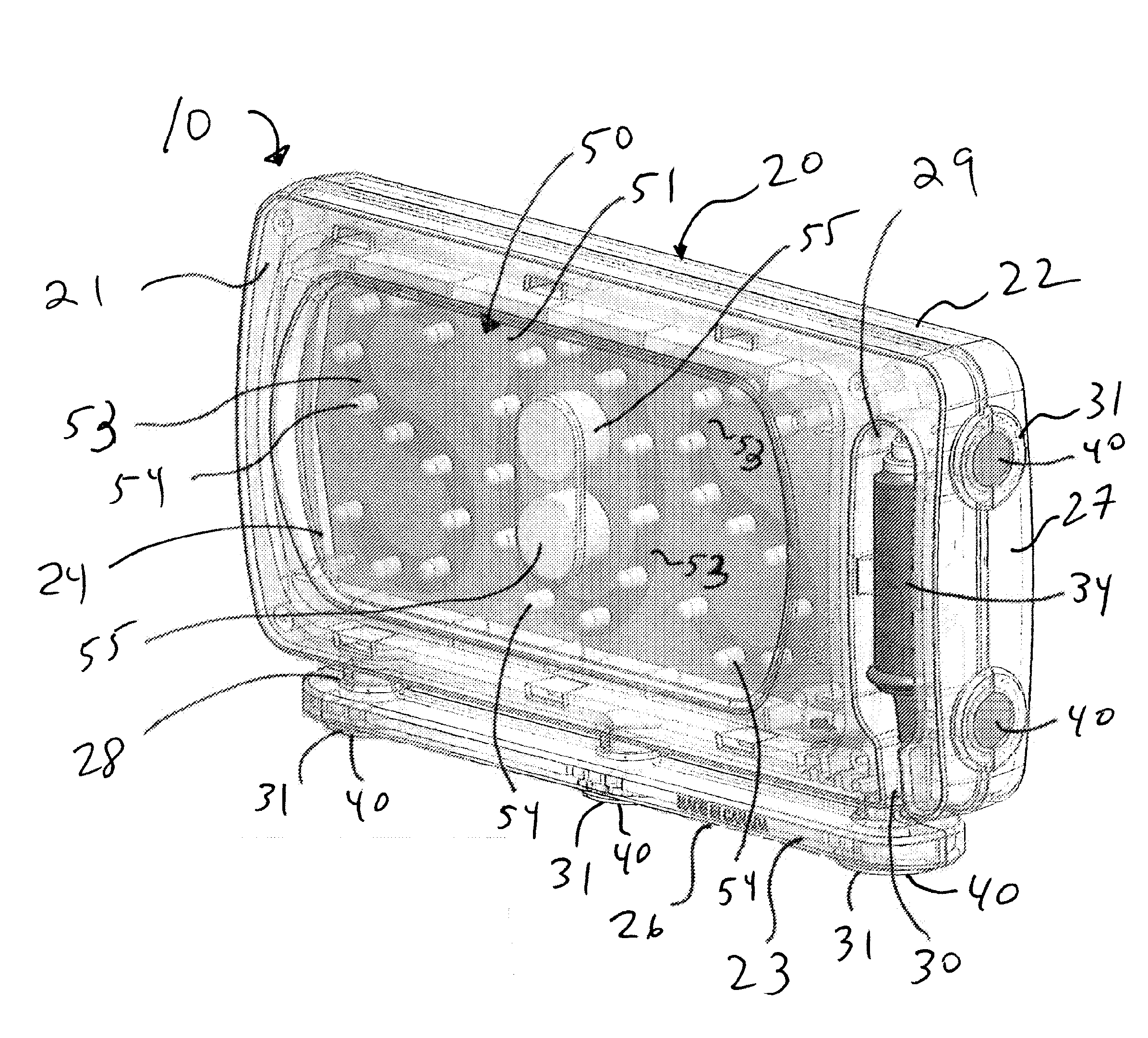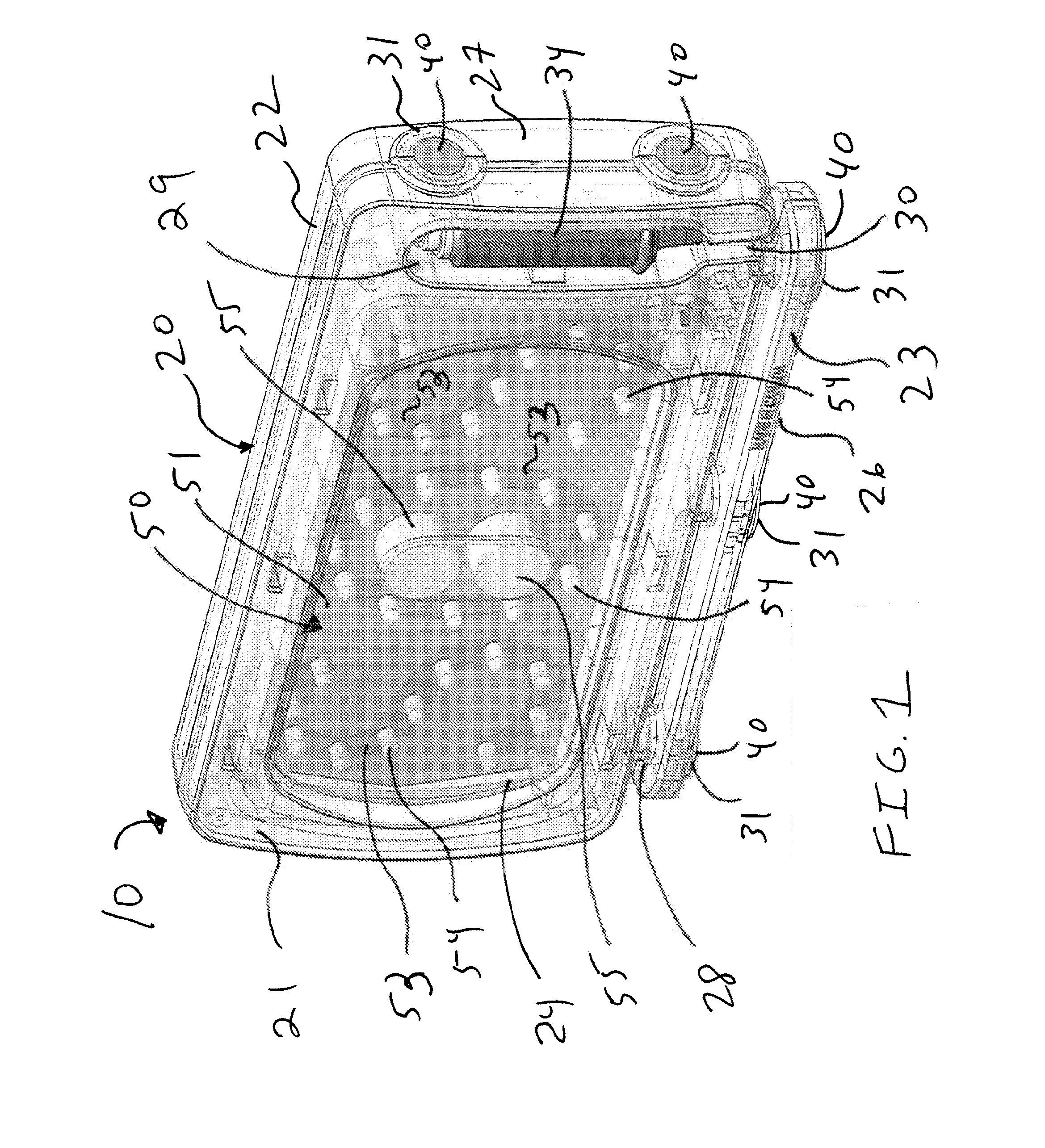Portable long-distance s.o.s. signaling device
a signaling device and long-distance technology, applied in the field of signaling devices, can solve the problems of only lasting a relatively short amount of time for flare illumination, and achieve the effects of facilitating other people's visibility, and reducing the distance between the signaling device and the targ
- Summary
- Abstract
- Description
- Claims
- Application Information
AI Technical Summary
Benefits of technology
Problems solved by technology
Method used
Image
Examples
first embodiment
[0028]the present portable long distance S.O.S. signaling device 10 is shown in FIG. 1 as comprising housing 20, preferably constructed of a sturdy polycarbonate material and having front housing portion 21 and rear housing portion 22, which collectively form the overall housing. Housing 20 further includes base region 23, front lens region 24, back lens region 25 (shown in FIG. 3), bottom side 26, right side 27, power plug receptacle 29 communicating through channel 30 with cord reel region 28, and a plurality of magnet receptacles 31. Specifically, base region 23 includes three magnet receptacles 31 disposed on bottom side 26, spaced substantially equidistantly apart along the length of housing 20. Right side 27 includes two additional magnet receptacles, spaced proximate the top and bottom edges of housing 20. Each magnet receptacle 31 is substantially cylindrical in shape and securely retains a relatively powerful, substantially disc-shaped magnet 40, exposing a top outer surfac...
second embodiment
[0032]present portable long distance S.O.S. signaling device 10 is shown in FIGS. 2A, 2B, 3 and 4 (with LEDs 54 and 55 of display unit 50 being omitted in FIGS. 2A and 2B for clarity). In this embodiment, cord reel region 28 is disposed vertically, between power plug receptacle 29 and lens regions 24 and 25 of housing 20, rather than horizontally, along base region 23 of housing 20, as in the embodiment of FIG. 1. This, in turn, permits power cord 33 to be wound about cord reel region 28 in a vertical orientation, as opposed to a horizontal orientation, as in the embodiment of FIG. 1.
[0033]As shown in FIG. 3, in the event of a vehicle malfunction or other emergency situation, a driver of automobile 60 quickly and easily activate and deploy portable long distance S.O.S. signaling device 10 without leaving the safety of the vehicle's interior. In particular, once the unit 10 is retrieved from the glove compartment or other place of storage, power plug 34 is removed from power plug rec...
PUM
 Login to View More
Login to View More Abstract
Description
Claims
Application Information
 Login to View More
Login to View More - R&D
- Intellectual Property
- Life Sciences
- Materials
- Tech Scout
- Unparalleled Data Quality
- Higher Quality Content
- 60% Fewer Hallucinations
Browse by: Latest US Patents, China's latest patents, Technical Efficacy Thesaurus, Application Domain, Technology Topic, Popular Technical Reports.
© 2025 PatSnap. All rights reserved.Legal|Privacy policy|Modern Slavery Act Transparency Statement|Sitemap|About US| Contact US: help@patsnap.com



